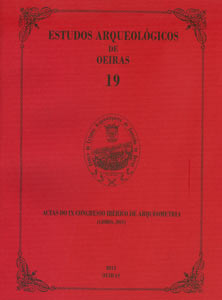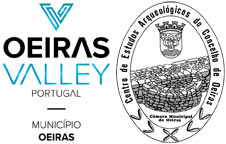Estudo arqueometalúrgico das dádivas funerárias dos hipogeus do Bronze Pleno do Sudoeste da Horta do Folgão (Serpa, Portugal)
Keywords:
Middle Bronze Age, arsenical copper, post-casting workAbstract
Three Southwestern Middle Bronze Age funerary hypogea were excavated at the archaeological site of Horta do Folgão (Serpa, Portugal). Funerary offerings included a small awl and a sword with six rivets, the last being very rare among archaeological artefacts recorded from contexts of this epoch (1800-1600 BC). These metallic artefacts were characterized by EDXRF, micro-EDXRF, OM and SEM-EDS to establish their elemental composition and manufacture. They are composed of copper with variable arsenic contents (1.6% – awl; 4.3% – sword), which is typical among the South-western Middle Bronze Age metallurgy. The manufacture involved hammering and annealing with different characteristics, i.e. somewhat crude for the awl, but efficient for the sword. Besides, the blade was more deformed at the tip and especially at the cutting-edge, certainly to obtain a higher hardness. This study constitutes a good example of the use of an analytical methodology with negligible effects in important archaeological and museological artefacts, in order to get a better knowledge of the prehistoric evolution in the Portuguese territory.
Downloads
Published
How to Cite
Issue
Section
License
Os artigos publicados são da exclusiva responsabilidade dos Autores.
É expressamente proibida a reprodução de quaisquer imagens sobre as quais
existam direitos de autor sem o prévio consentimento dos signatários dos artigos
respectivos.




